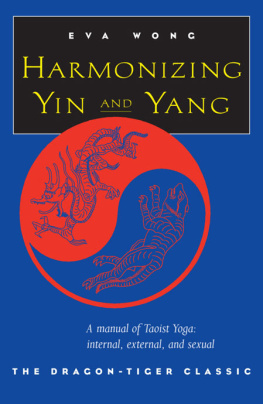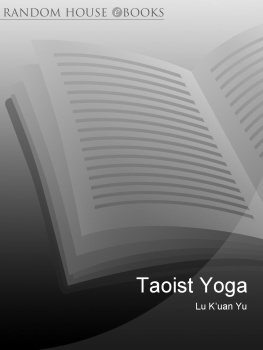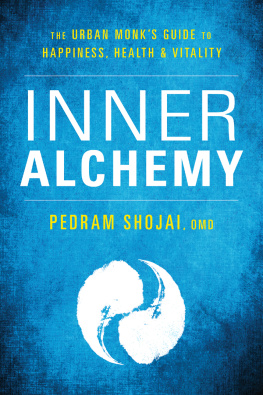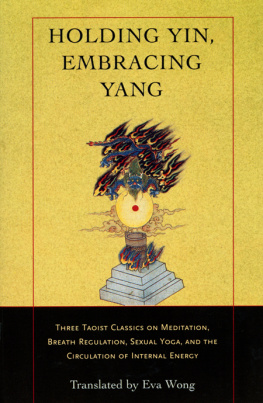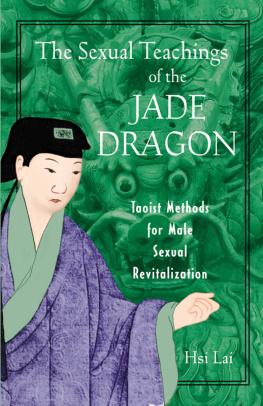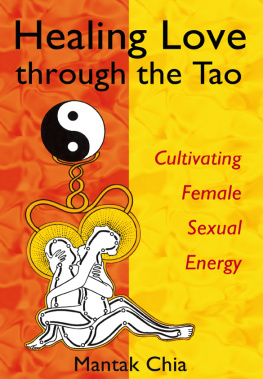
Paolo Proietti
WATER'S DWELLING PLACE
Notes of Taoist Inner Alchemy
Translated from the original Italian by Christine Hogan and Massimo Brillo.
Two loyal Tai Chi students who have achieved a new equilibrium in life, both physical and philosophical, thanks to their Maestro.
Under the plum tree,
Awaiting, Quan Yin,
Mistress of Joy.
Her lips as red as the fruit.
Her skin as white as the flower.
Offer her your hand and she will be yours.
For always.
( Anon. Chinese, XIII century)

Nei Dan, the pathway of the Inner Alchemy
The Golden Elixir is a name that portrays one's fundamental nature. The Golden Elixir does not exist outside its fundamental nature. All human beings possess the Golden Elixir. The wise man and the ordinary person possess it equally.
It is the seed of the Immortals and the Buddha, the root of the worthwile and the wise
(Liu Yiming, 1734-1821)
A few years ago, I think it was 2012, November 2012, Andrea Pagano, my friend and a student of mine at the time, showed me a Taoist antique from the XVII century. It had belonged to his grandfather, a consul in China during the period of Mussolini. Andrea thought that I could help him understand its use and to interpret the strange symbols that decorated it.
It was a silver mirror, completely smooth on one side and covered by pictures and ideograms on the other.
For a week, we did nothing else but copy, transcribe and compare notes and in the end, thanks to Google and to a friend of Andrea who is a sinologist, we found that the Mirror was in fact a sort of account of Inner Alchemy of the lineage called Daojao , going back to Lao Tzu.
It most certainly was also a musical instrument (if we hit it with a small hammer it rang like a Tibetan bell), but its original use must have been that of a meditation object and, therefore, a practical handbook.
In the middle of the decorated side (the back of the mirror) there were two dragons, their heads and tails entwined together, one flew downwards and the other flew upwards. The little one creates the mountains could be read on the left and on the right Rujing which Andreas friend translated as to enter into a foreign land or to travel beyond the mirror.

At the bottom there was an alchemist's tripod, also called Xuanpin or Mysterious Female , to the left of this, amongst other symbols, stood out a flower with five petals, (which was according to me a plum-tree flower). On the right there was a plum.
The flower and fruit of the plum-tree are symbols of Lao Tzu.
Lao Tzu was the nickname given to a Taoist teacher of the V century a.C. and it means the Old Baby .
In fact Lao Tzu's real name was Li, which means plum-tree .
It is said that he was born under a tree and that, at the moment of his birth, he had white hair like the flower and red cheeks like the fruit of the plum-tree, characteristics which he retained all of his life. This is the reason why he acquired the nick name Lao Tzu, the Old Baby.
On each side above the flower and the fruit, there were two couples of gods or spirits.
They were probably four of the Inner Gods, the fine energies that connect the human being's organs to the celestial spheres. These fine energies also represent the four energy centres (we can define them as Cakra ), used in meditation during the practice of Nei Dan, Inner Alchemy.
Above the two couples of the gods, there was the symbol of the sun on the left and the moon on the right.
Inside these luminary symbols, could be seen the outline of a dragon and a tiger. According to the iconic Taoist tradition these represent Supreme Yang and Supreme Yin, pouring their elixir into the tripod (the alchemist's crucible).
At the top, in the middle there was a castle, the Yellow Castle. This castle symbolizes the first revelation of the Being, which in the human body is found in the centre of the forehead, in a space which is one Kun (one inch) wide, corresponding to Ajna Cakra in Yoga.
In the ascending and descending dragons, in the centre of the mirror, we found a written text of Tijqun which represents the last phase of Taoist meditation, called Chongxuan or double mystery.

1 Paolo Proietti Qi Gong Exercise
Searching for Qi
I was already a yoga teacher when I started to be interested in Taoist psychophysical techniques in the middle of the 1980's.
In 1990, in both Hong Kong and in the Chinatown of Singapore, I had taken lessons of Qi Gong and Tijqun. These lessons caused me to have doubts and perplexities on the level of teaching that I had found in the West.
I had the impression that in the form ( Tao Lu ) and in the techniques that we study in the West there was something missing.
There was always a lot of talk about Qi , the inner energy and about extra sensorial perceptions linked to the flow of this Qi , but nobody seemed able to help you to feel it.
Ok, so what is this Qi? How can I perceive it? The majority of Italian instructors that I have known replied with the seraphic smile of Buddha You'll see... You need time... When you're ready you'll feel the power of Qi... And then you won't need to ask any more questions.
When I was in Hong Kong I asked an old Chinese man to teach me some Qi Gong exercises. The first thing he did was to point the index and middle finger of his right hand at about twenty centimetres from the centre of my forehead.
I felt a light electric current and then a light pressure, pleasant and intermittent.
It seemed that the space between his fingers and my forehead had became dense and he was managing to command it with his will: it was Qi.
Every morning at 7:15, we met in the Chai Wan gardens. For a good half hour Mr. Zhong (this was the name he wanted me to use) made me practice hand sensitivity exercises.
The elusive Qi slowly became a tangible presence.
A kind of fluid, pliable and dense, like the mercury in a thermometer, that I seemed to be able to model at will.
With this I formed small invisible balls that I moved around my body at will.
Apart from my fingertips and the palms of my hands, the most sensitive points seemed to be the centre of my forehead, my heart and my navel.
In December 1990 I left Hong Kong, bound for Istanbul. Then after a brief stay in Greece I returned home to Rome. Each day I practiced a form of Tijqun (the Old Form in the Yang style ) a series of eight positions that Mr. Zhong had taught me. I tried to perceive the Qi in each position and to move it myself in my legs, in my arms and down my vertebral column.
Without realizing it, I started to modify my postures and my movements and, after a few months, my body started to change. My hands and feet became wider (my shoe size is 45 now, whilst in 1990 it was 42 and a half). My shoulder blades took on an unusual position as if they were joined to my lower ribs.
I met Andrea Pagano in August 2006, in Ansedonia. He had seen me practicing Tij on the beach and he was impressed by the fluidity and the gracefulness of the movements. According to him too fluid and too graceful Beautiful, but you seem to be a dancer he said - Tijqun is a Martial Art . We began to talk about Tao , the Energies' Dance , the relationship between Nath Yoga and Qi Gong .
Next page

